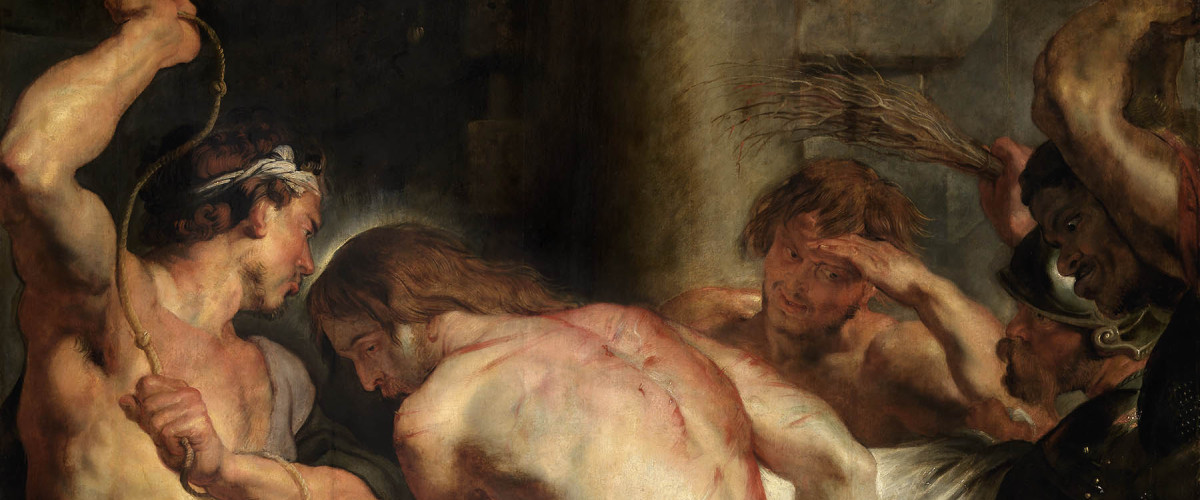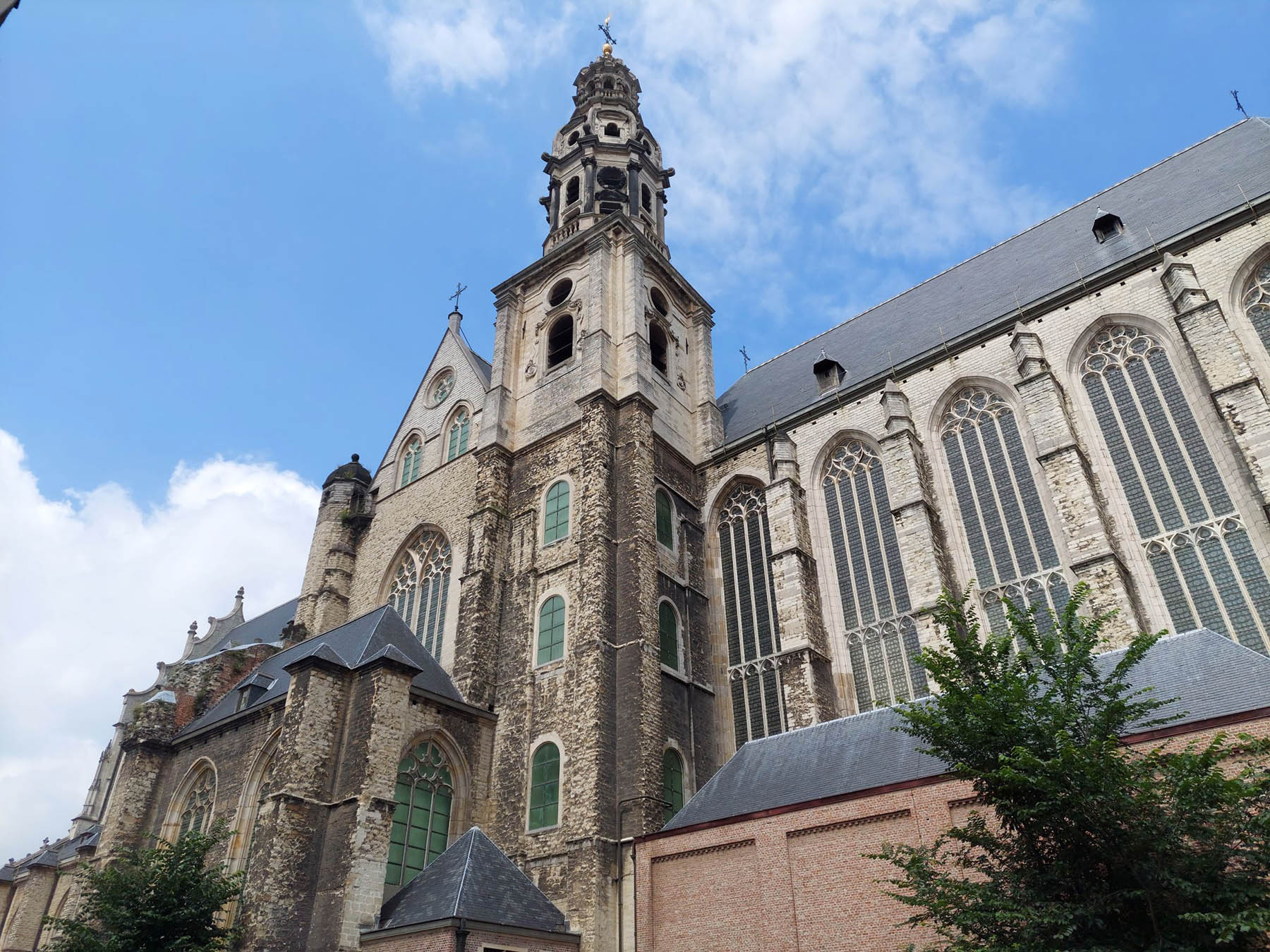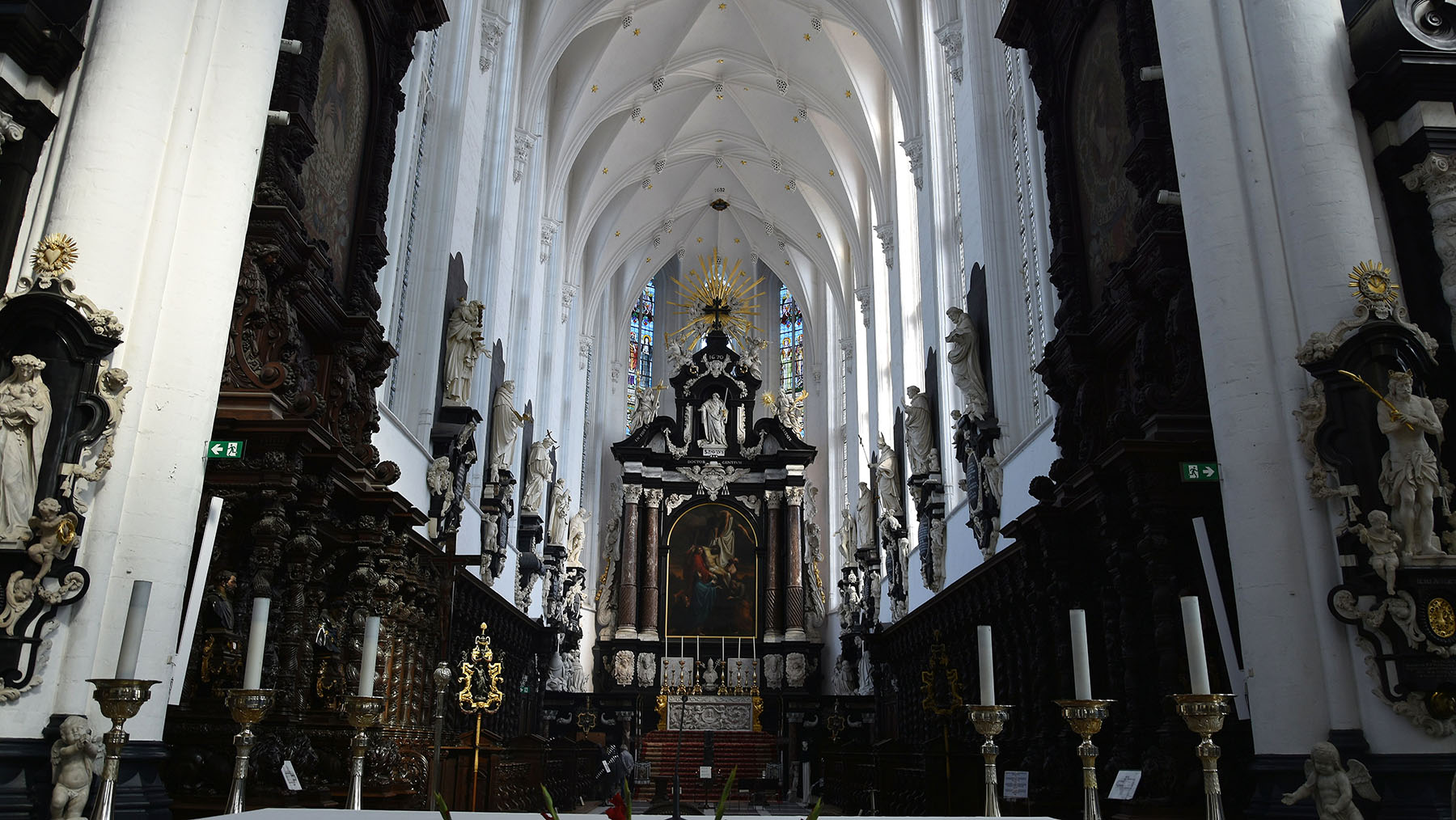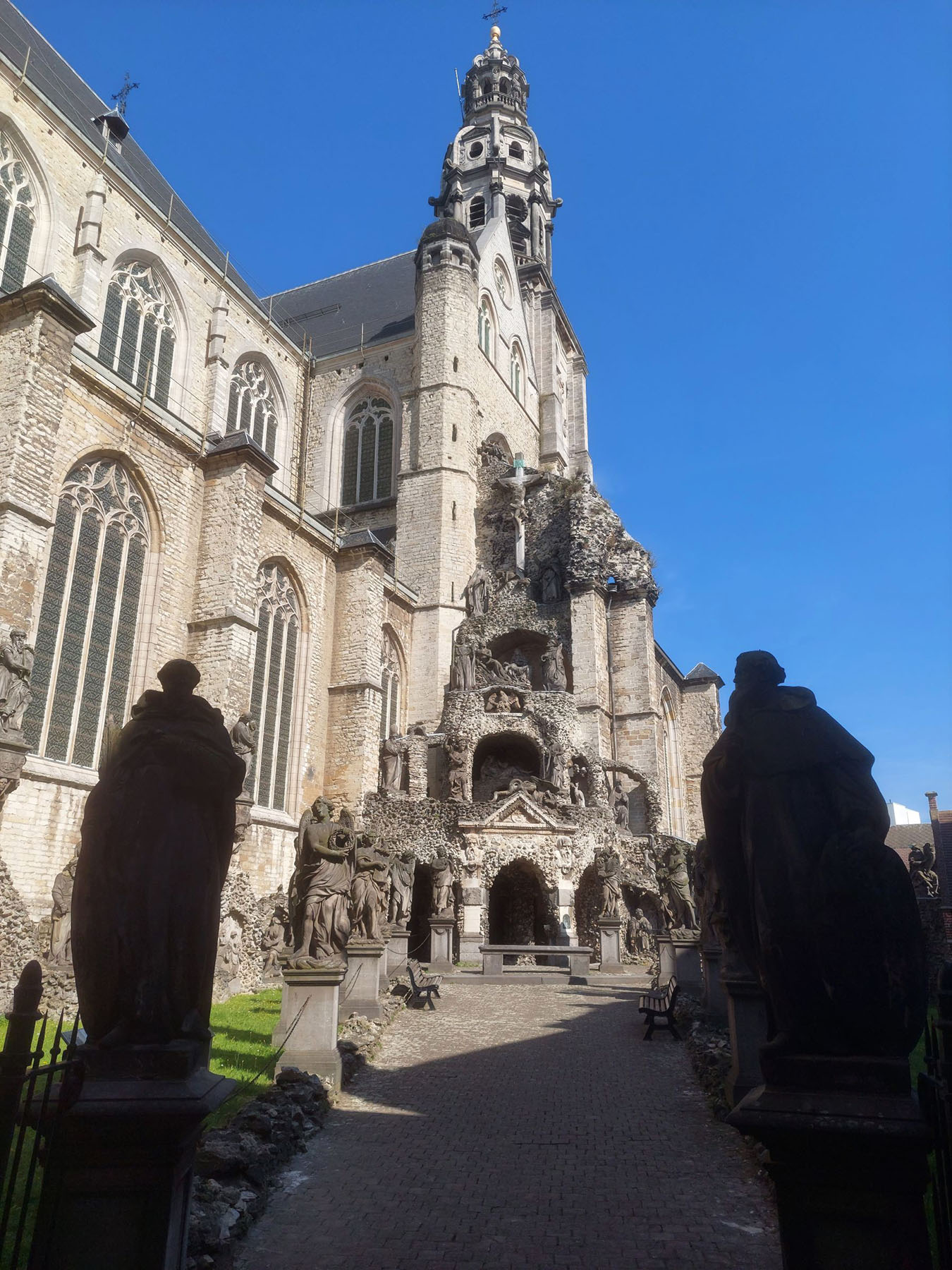What is the one place, apart from a museum, where we can find paintings by the three greatest Baroque painters of Antwerp: Rubens, Van Dyck and Jordaens? The Sint-Pauluskerk in Antwerp! And visitors who get tired of all the Baroque magnificence can take a breather in the serene Calvary garden.
Saint Paul's Church
Saint Paul's Church is located in Antwerp’s old town, a stone’s throw away from the Scheldt river. It was mainly a sailors’ district. The late-Gothic church was built in the 16th century for the Dominican monastery and is dedicated to the Apostle Paul. In spite of its turbulent history, it was able to hold on to quite a few valuable artworks. Today, the site consists of a church with corridors of the former monastery, a lush garden, ruins of the monastery, and a unique Calvary garden with more than 60 sculptures depicting the Death and Resurrection of Jesus.
The Flagellation of Christ - Peter Paul Rubens
The Confraternity of the Holy Rosary commissioned a cycle of fifteen paintings in 1617 that were to depict the mysteries of the rosary. There were a total of eleven painters from Antwerp involved in the project, but the most well-known among them were Peter Paul Rubens, Anthony van Dyck and Jacob Jordaens. The paintings depict passages from the life of Jesus and Mary, so the illiterate masses might learn the stories of the Bible. Rubens’s painting was paid for by rich merchant Louis Clarisse whose son, Marcus Antonius, was one of the monks at the Dominican monastery. The Flagellation of Christ is the 7th painting in the cycle. It shows Christ tied to a column, with His back towards the viewer. Four executioners are whipping His now bleeding back while one of them is kicking His calves to make him stumble to the ground. A dog can be seen barking at the scene. In 1794, the French carried the painting off to Paris, but it would return to its original spot in 1816.
The Crucifixion - Jacob Jordaens
Magdalena Lewieter paid 150 guilders to Jacob Jordaens for The Crucifixion, the 10th painting in the cycle. We see a dead Jesus nailed to the Cross, the parchment with the inscription flapping in the wind. The four people who are there - Mary, Saint John the Evangelist, Mary Magdalene and Mary of Clopas - are depicted to the right and left of the Cross. They are mourning the great loss. Like its counterparts, this painting was carried off by the French in 1794, but returned to the church in 1816.
Practical information
Disabled access
- The church and treasury are easy to access for the disabled.
- The archaeological site and Calvary garden are difficult to access for the disabled due to the steps.



